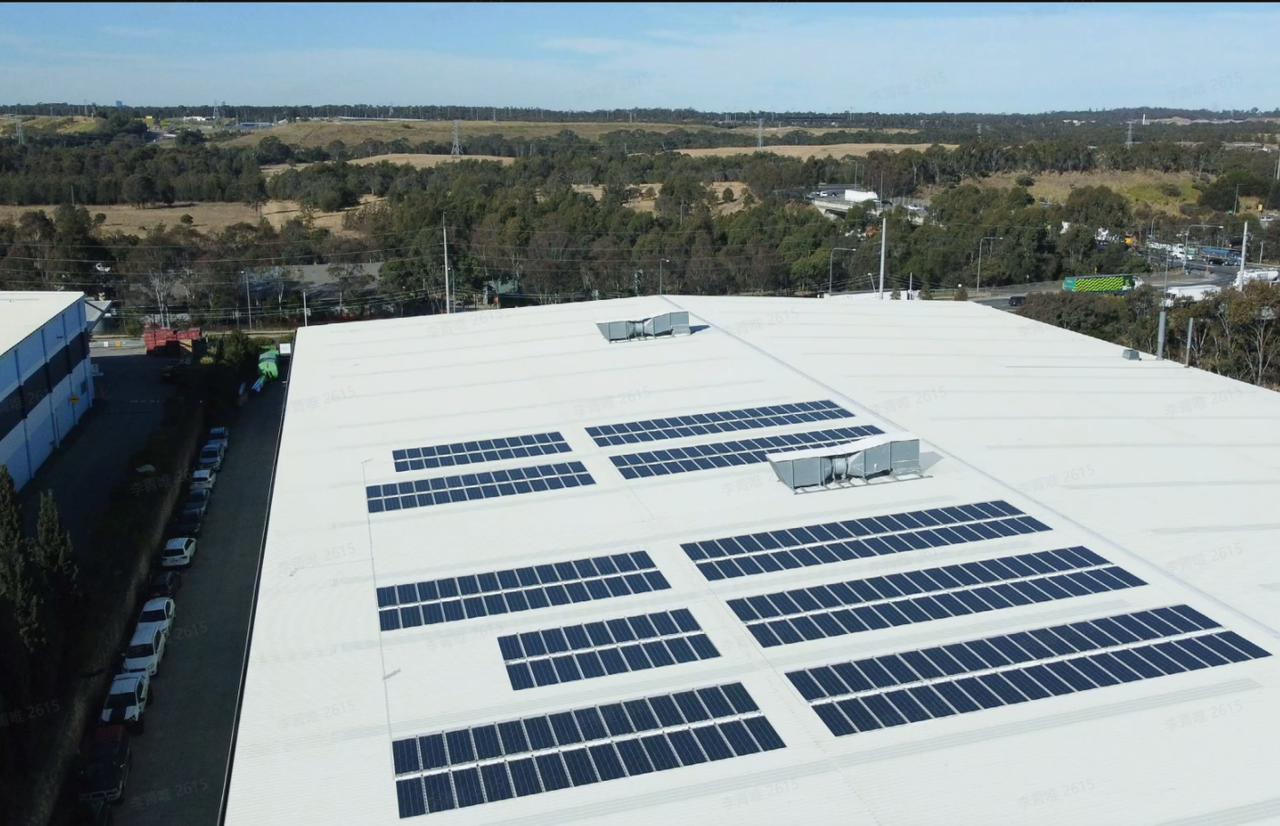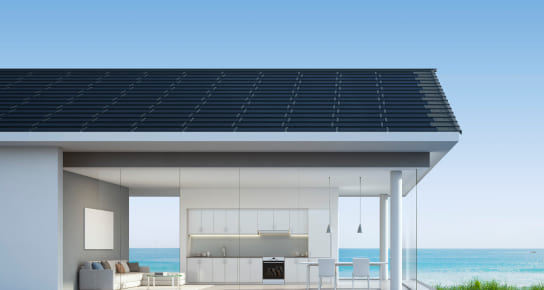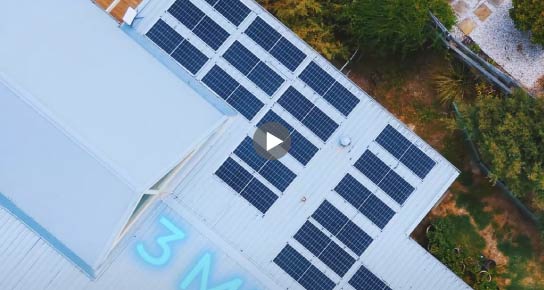Solar Power, Carbon Reduction, and Tree Equivalency
April 08, 2025
Solar power is becoming more and more popular, and for good reason—it helps save money on electricity bills, reduce carbon emissions, and benefits the environment. But here’s the thing: while cost savings are easy to see, many homeowners new to solar energy aren’t quite sure how a system’s rated power translates into real-world results. Questions like "How much power will my system actually produce?" or "How much money and CO₂ emissions will I save?" are pretty common. This article will break it all down in simple terms.
Conversion Between PV System Capacity and Electricity Generation
When you install a solar power system, its capacity is measured in kilowatts (kW). This number tells you the system’s maximum power output under perfect conditions—basically, on a sunny day with ideal lighting and temperature.
Another important term is solar hours, which refers to how much sunlight is actually usable for power generation in a given location. This number changes depending on where you live and can be found using databases like NASA’s SSE or software like PVsyst.

Image sourced from NASA Meteorological Database
Moreover, the power generation of a solar PV system is also affected by its overall efficiency. This includes inverter efficiency losses (1%–4%), temperature losses (5%–15%), and DC/AC cable losses (2%–5%), among others. Generally speaking, the overall efficiency of power generation relative to installed capacity falls within the range of 75% to 92%.
Additionally, solar power generation is affected by module degradation. Typically, there is a 2%–3% efficiency drop in the first year, followed by around 0.5% per year thereafter. For the calculations below, we will temporarily ignore the year-over-year degradation of the modules.
To estimate how much electricity a solar system will generate, you can use this simple formula:
Electricity Generation (kWh) = Installed Capacity (kWp) × Solar Hours (h) × PV System Efficiency
Example:Let’s say a manufacturer in Australia installs a 111 kWp solar system, and the area gets an average of 1,400 hours of usable sunlight per year. Assume the PV system efficiency is 90%, and it operates year-round, the estimated annual electricity production would be:
111 kWp × 90% × 1,400h = 140,000kWh
The total electricity generation of a PV system over its lifetime depends on the module’s lifespan and degradation rate, which vary based on cell technology and product category. Assuming the system generates 140,000 kWh per year and remains operational for 15 years,and no degradation is considered, the total electricity generation over its lifecycle would be:
140,000 kwh×15 years = 2,100,000 kWh

GoodWe Galaxy Series Ultra-Lightweight Solar Panel Project in Australia
Conversion Between Electricity Generation and Carbon Emission Reduction
Besides saving money, solar energy also helps reduce carbon emissions. But how much? That depends on the type of electricity it replaces. The carbon emission factor tells us how much CO₂ is released per kilowatt-hour of electricity from the local power grid. This varies by location and can usually be found through power companies or environmental agencies.
The formula for calculating CO₂ displacement is:
Carbon Emission Reduction (kg CO₂) = Electricity Generation (kWh) × Carbon Emission Factor (kg CO₂/kWh)
Example: Continuing with the Australian project, if the local electricity grid has a carbon emission factor of 0.5 kg CO₂/kWh, the total carbon reduction over the system’s lifecycle would be:
2,100,000 kWh×0.5 kg CO₂/kWh = 1,050,000 kg CO₂
So, this solar system would prevent 1,050 metric tons CO₂ from being released into the atmosphere.

Image sourced from Business Today ESG https://esg.businesstoday.com.tw/article/category/180687/post/202305190027
Conversion Between Electricity Generation and Equivalent Tree Planting
Another way to look at carbon reduction is by comparing it to planting trees. Trees absorb CO₂, so we can estimate how many trees it would take to absorb the same amount of CO₂ that a solar system prevents.
On average, a fir tree absorbs about 55 kg of CO₂ over 15 years. Using that number, we can calculate how many trees our Australian solar system is equivalent to:
Equivalent Tree Planting = Total Carbon Reduction (kg CO₂) ÷ 55 kg CO₂
Example:Using the Australian project as an example, with a total CO₂ reduction of 1,050,000 kg, the equivalent number of trees planted over the system’s lifetime would be:
1,050,000 kg CO₂ ÷ 55 kg CO₂ = 19,090 trees

Image sourced from BBC https://www.bbc.com/zhongwen/simp/science-54729204
GoodWe PVBM Dedicated to Shaping A Greener, Zero-Carbon Future.
By seamlessly integrating solar power into buildings, we’re not just generating clean energy—we’re also carefully tracking the carbon footprint of our products from start to finish.
Take our first product, Sunshine, for example. We’ve meticulously tracked its carbon emissions across its entire lifecycle—from raw material extraction and transportation to manufacturing and long-term use. The total calculated carbon footprint is approximately 0.58 kg CO₂. Notably, a significant 80.37% of the total carbon emissions originate from the raw materials acquisition stage. To ensure transparency and accountability, we’ve obtained a carbon footprint certification, making every Sunshine module fully traceable in terms of its environmental impact.
Now, let’s put things into perspective. Suppose a Sunshine module has a 92W power rating. Taking into account its gradual efficiency decline—operating at 94% efficiency per year—over a span of 15 years, it would generate an impressive 1,634.47 kWh of clean electricity.
Given a carbon emission factor of 0.5 kg CO₂/kWh, this means one Sunshine module alone can help reduce carbon emissions by about 817.236 kg CO₂ (0.82 tons CO₂)—far more than what was generated during its production.
In other words, every Sunshine module effectively neutralizes its own carbon footprint within its 15-year lifespan, making true carbon neutrality a reality. By continuously delivering clean energy, we’re not only turning buildings into a part of the renewable energy ecosystem but also taking meaningful steps toward preserving our planet’s green hills and clear waters, contributing to a sustainable, zero-carbon future.
For more insights into photovoltaics, energy conservation, and carbon reduction, we recommend reading the following articles:
https://arxiv.org/abs/2105.03562?utm
https://sustainable.kmutt.ac.th/achieving-carbon-neutrality-the-role-of-renewable-energy/?utm
https://www.sciencedirect.com/science/article/abs/pii/S1342937X23001168?utm





























